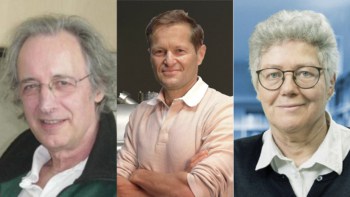The demand for mobile phones shows no sign of slowing down. The number of users in the UK alone has recently topped 40 million, while in Finland a staggering 80% of the population owns a mobile phone. But the radio-frequency spectrum is a precious resource that the wireless-communication industry must manage efficiently as the airwaves become increasingly packed. Now a team of researchers at Bell Labs in the US has demonstrated that polarized electromagnetic waves can boost the capacity of radio signals by a factor of three (M Andrews et al 2001 Nature 409 316).

Like all electromagnetic waves, radio waves contain vibrating electric and magnetic fields. In free space, these electric and magnetic fields are constrained to be perpendicular to each other, and to the direction of propagation. The waves can also be polarized. For instance, if the electric field vibrates only in the vertical direction, the wave is said to be vertically polarized. This polarization will not change as the wave travels through free space. In urban areas, however, radio signals are usually scattered by buildings and other large objects. This scattering effectively creates extra polarization states in all three spatial directions at a receiving antenna.
Now Michael Andrews and co-workers have exploited this fact using a group of three orthogonal antennae that can transmit or receive electric fields whatever their polarization. The new system – dubbed a tripole by the Bell Labs team – thus increases the rate at which data can be transmitted by three times compared with conventional ‘dual polarized’ radio signals.
Andrews and his colleagues demonstrated this improvement by transmitting an encoded image of a colour painting by Spanish artist Joan Miró. The red, green and blue components of the painting were transmitted at 880 MHz by each of the orthogonal antennae over a distance of 25 metres in the cafeteria at Bell Labs. The receiver was located around the corner from the transmitter so that it detected radio waves that had been scattered, and reconstructed them to form the full-colour image. The Bell Labs team has also demonstrated that it should be possible to further increase the capacity by a factor of six by using three magnetic-dipole antennae in addition to the tripole.



